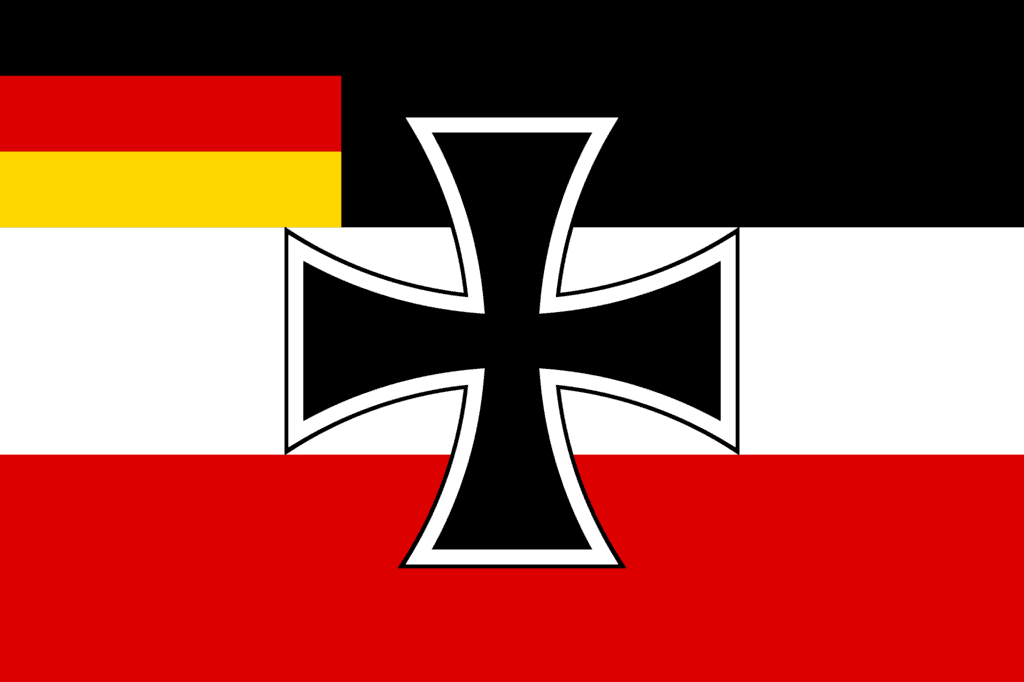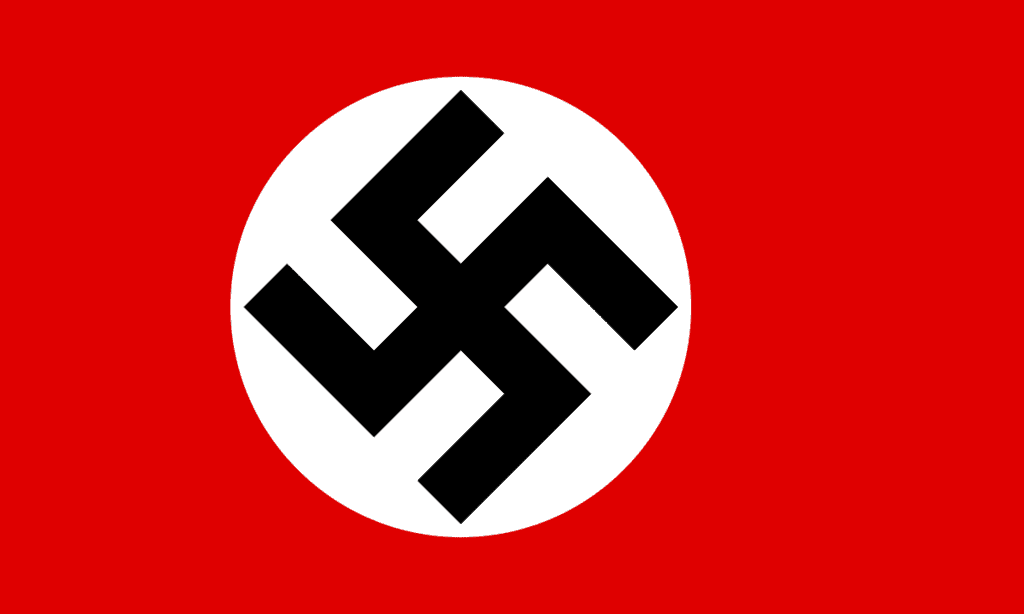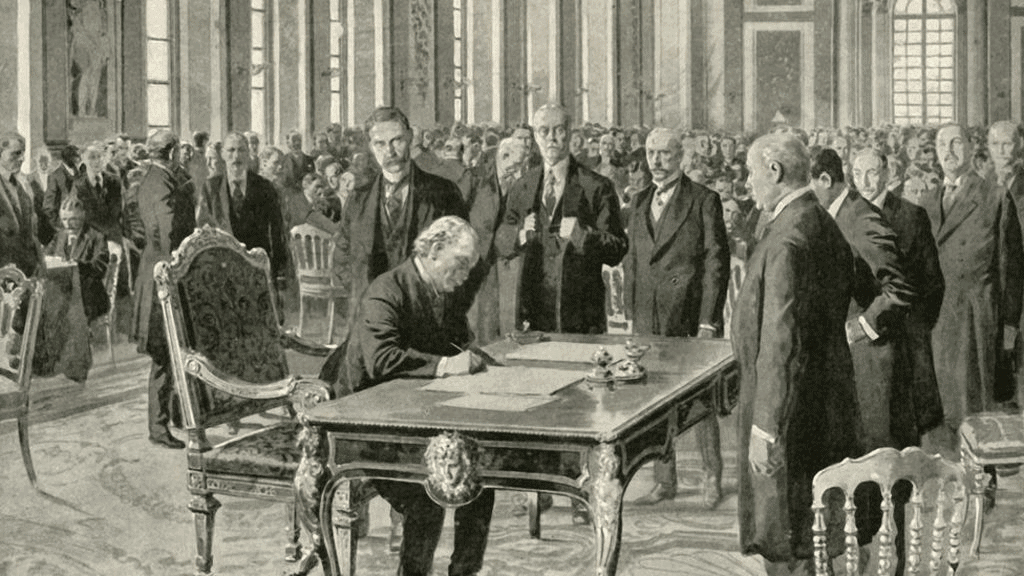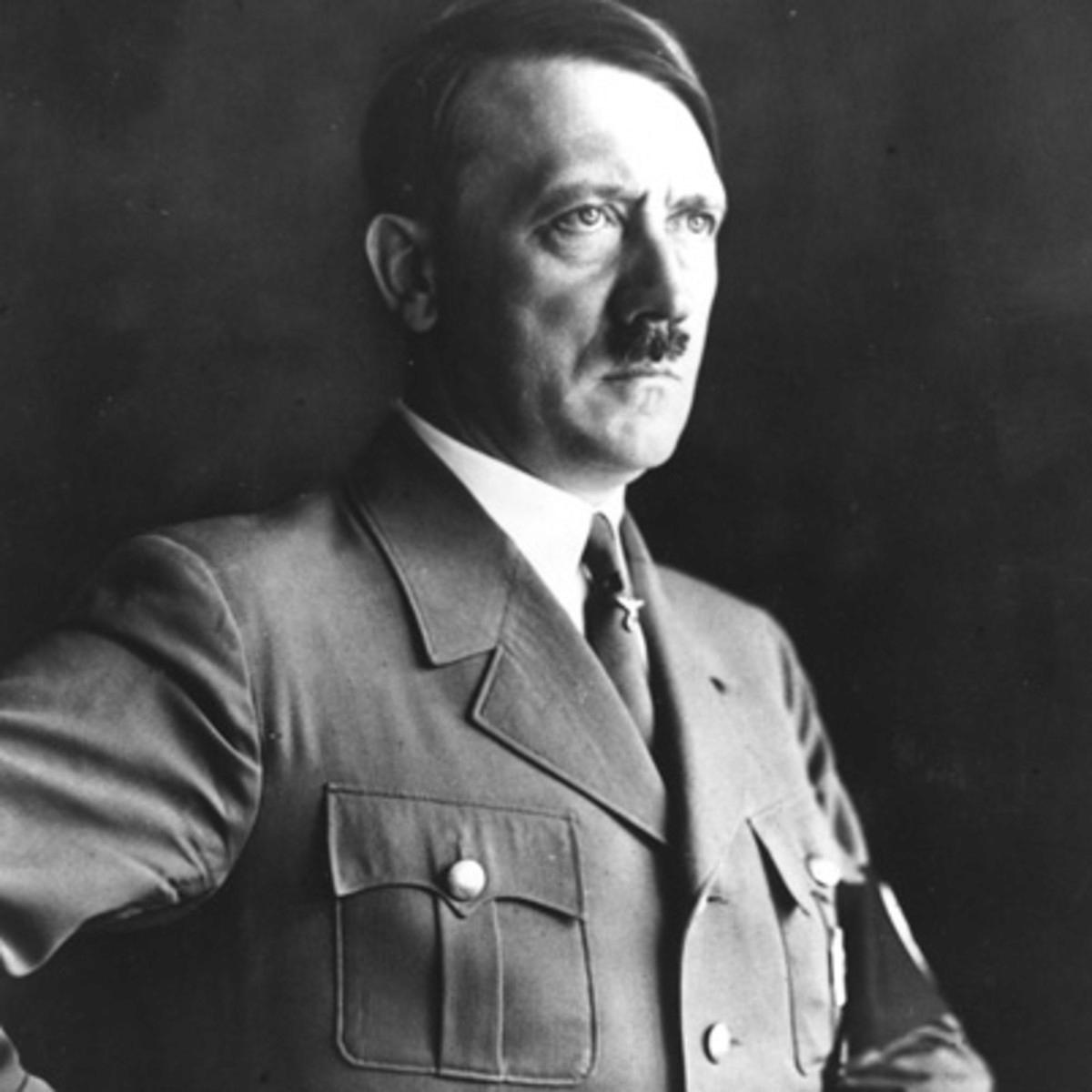Class 9 History Chapter 3 Question Answers - Nazism and the Rise of Hitler
Q1: Mention any five effects of the 'Great Economic Depression' on the economy of Germany.
Ans:
- The industrial production was reduced to 40 percent of the 1929 level.
- Workers lost their jobs or were paid reduced wages.
- Unemployed youth took to criminal activities and total despair became commonplace.
- The middle classes, especially salaried employees and pensioners, saw their savings diminish when the currency lost its value.
- Small businessmen, the self-employed and retailers suffered as their businesses got ruined.
Q2: Why was the 'Treaty of Versailles' treated as harsh and humiliating to people of Germany? Explain.
Ans:
- Germany lost its overseas colonies, a tenth of its population, 13 percent of its territories, 75 percent of its iron and 26 percent of its coal to France, Poland, Denmark and Lithuania.
- The Allied Powers demilitarised Germany to weaken its power.
- The War Guilt Clause held Germany responsible for the war and the damages the Allied countries suffered.
- Germany was forced to pay compensation amounting to 6 billion.
- The Allied armies also occupied the resource-rich Rhineland for much of the 1920s.
Q3: Describe any three factors that made the Weimar Republic politically fragile.
OR
Describe the problems faced by the Weimar Republic.
Ans:
- Proportional Representation: This system of electing candidates weakened or made it impossible for any party to get a majority. Only coalition governments were possible. On average, a ministry lasted for 249 days.
- Article 48: It gave the President the powers to impose emergency, suspend civil rights and rule by decree. This article was used by Presidents.
- Failure of the Weimar Republic: It failed to get the faith of the people. Democracy was new to the Germans and they found it the cause behind the economic crisis, national humiliation due to war guilt and the Treaty of Versailles. People looked for alternatives that paved the way for the rise of Hitler.
Q4: Explain the circumstances under which Nazism became popular in Germany. [2015, 2016]
OR
What is Nazism? How did it become popular in Germany? Explain. [2014]
Ans: Circumstances under which Nazism became popular were:
- Hitler was a great orator. His passion and words moved people.
- He promised to build a strong nation.
- He promised to restore dignity of the Germans and undo the injustice of the Treaty of Versailles.
- He promised employment for those looking for work and a secure future for the youth.
- He promised to weed out all foreign influences and resist all foreign conspiracies against Germany.
- Hitler devised a new style of politics. Nazis held massive rallies and public meetings as to show the strength and confidence for Hitler.
- The red banners with the Swastika, ritualised rounds of applause and the Nazi salute after the speeches, were all part of this spectacle of power.
- Nazi propaganda projected Hitler as a Messiah or a Saviour.
Q5: ‘Nazi ideology was synonymous with Hitler’s world view.’ Explain. (CBSE 2010)
Ans:
- ‘Nazi’ ideology was synonymous with Hitler’s world view.
- It said and meant that there was no equality between people but only a racial hierarchy.
- According to it, blond, blue-eyed Nordic German Aryans were at the top, while Jews were located at the lowest rung of the ladder.
- They came to be regarded as anti-race.
- Darwin was a natural scientist, who tried to explain the creation of plants and animals through the concept of evolution and natural selection.
- Herbert Spencer later added the idea of the ‘survival of the fittest.’
- Their ideas were borrowed by the Nazis – whose argument was, the “strongest race would survive and the weak ones would perish.
- The Aryan race was the finest. It had to retain its purity, became stronger, and dominate the world.”
- The other aspect of Hitler’s ideology was the concept of ‘lebensraum’ or living space meaning new territories should be acquired, as it would enhance the area of the mother country.
Q6: Explain any three of the following terms :
(a) Lebensraum
(b) A Racial State
(c) Propaganda
(d) Ghettoisation and concentration camps
(e) Jungvolk
Ans: (a) Lebensraum: It was an aspect of Hitler’s Ideology that is related to the geopolitical concept of living space. He believed that new territories had to be acquired for settlement. This would enhance the area of the mother country while enabling the settlers on new lands to retain an intimate link with the place of their origin.
(b) Racial State: Once in power, the Nazis quickly began to implement their dream of creating an exclusive racial community of pure Germans by physically eliminating all those who were seen as ‘undesirable’ in the extended empire. Nazis only wanted a society of ‘pure and healthy Nordic Aryans’. They alone were considered ‘desirable’.
(c) Propaganda: The Nazi regime used language and media with care and often to great effect. They used films, pictures, radio, posters, etc. to spread hatred for the Jews. Propaganda is a specific type of message directly aimed at influencing the opinion of people through the use of posters, films, speeches, etc.
(d) Ghettoisation and Concentration Camps: From September 1941, all Jews had to wear a yellow Star of David on their breasts. This identity mark was stamped on their passport, all legal documents, and houses. They were kept in Jewish houses in Germany and in ghettos like Lodz and Warsaw in the east. These became sites of extreme misery and poverty. The largest Nazi concentration camp is identified with Auschwitz (Poland). Built in 1940, the camp served as a major element in the perpetration of the holocaust, killing around 16 million people of whom 90 % were Jews. The camp was surrounded by barbed wire. The camp held 100,000 prisoners at one time. The camp’s main purpose was not internment but extermination. For this purpose, the camp was equipped with four gas chambers, and each chamber could hold 2,500 people at one time.
(e) Jungvolk: These were Nazi youth groups for children below 14 years of age. Youth organisations were made responsible for educating German youth in ‘the spirit of National Socialism’. Ten-year-olds had to enter Jungvolk. At 14, all boys had to join the Nazi youth organisation.
Q7: Give reasons why the Weimar Republic failed to solve the problems of Germany.
Ans: The Weimar Republic Flag
The Weimar Republic Flag
- The birth of the Weimar Republic coincided with the uprising of the Spartacus League on the pattern of the Bolshevik Revolution in Russia. The Democrats, Socialists and Catholics opposed it. They met in Weimar to give shape to a democratic republic. The republic was not received well by its own people largely because of the terms it was forced to accept after Germany’s defeat at the end of the First World War.
- Many Germans held the new Weimar Republic responsible for not only the defeat in the war but the disgrace at Versailles. This republic was finally crippled by being forced to pay compensation. Soon after the economic crisis hit Germany in 1923, the value of the German mark fell considerably.
- The Weimar Republic had to face hyperinflation. Then came the Wall Street exchange crash in 1929. Politically too the Weimar Republic was fragile. The Weimar Constitution had some inherent defects, which made it unstable and vulnerable to dictatorship. One was proportional representation. This made achieving a majority by any one party a near-impossible task, leading to a rule by coalitions.
- Another defect was Article 48, which gave the president the powers to impose an emergency, suspend civil rights, and rule by decree. Within its short life, the Weimar Republic saw twenty different cabinets lasting on an average of 239 days, and liberal use of Article 48. Yet the crisis could not be managed. People lost confidence in the democratic parliamentary system, which seemed to offer no solutions.
Q8: Why was Nazism considered to be a negation of both democracy and socialism? (CBSE 2010)
Ans: The Nazi Germany Flag
The Nazi Germany Flag
- After assuming power on 30th January 1933, Hitler set out to dismantle the structure of democratic rule. The Fire decree of 28th February 1933 indefinitely suspended civic rights like freedom of speech, press, and assembly that had been guaranteed by the Weimar constitution. The repression of the Jews and Communists was severe.
- On 3rd March 1933, the famous Enabling Act was passed. This Act established a dictatorship in Germany. It gave Adolf Hitler all political and administrative power to sideline the German parliament. All political parties of Germany and trade unions were banned except for the Nazi party and its affiliates.
- The state established complete control over the economy, media, army, and judiciary. Special surveillance and security forces besides the existing regular police force, the Gestapo, the SD plus the extra-constitutional powers of these newly constructed forces gave the Nazi state its reputation of being the most dreaded criminal state.
Q9: Describe Hitler’s rise to power with reference to his
(a) Policy towards the youth
(b) His personal qualities
(c) Development of the art of propaganda
Ans:
(a) Policy towards youth
- Hitler was fanatically interested in the youth of the country. He felt that a strong Nazi society could be established only by teaching children the Nazi ideology. This required control over the child, both inside and outside school. Good German children were subjected to a process of Nazi schooling, a prolonged period of ideological training. School textbooks were rewritten.
- Racial science was introduced to justify the Nazi ideas of race. Children were taught to be loyal and submissive, hate Jews, worship Hitler. Even the function of sports was to nurture a spirit of violence and aggression among children. Hitler believed that boxing could make children iron-hearted, strong, and masculine.
- Youth organisations were made responsible for educating the German youth in ‘the spirit of National Socialism’. Ten-year-olds had to enter Jungvolk. At 14, all boys had to join the Nazi youth organisation – Hitler youth – where they learned to worship war, glorify aggression and violence, condemn democracy, hate Jews, Communists, Gypsies, and all those termed as ‘undesirables’. After a period of rigorous ideological and physical training, they joined the labour service usually at the age of 18. Then they had to serve in the armed forces and enter one of the Nazi organisations.
(b) His personal qualities
- Hitler was a tireless worker and an able organiser. He had a charming personality. He was an effective orator. Bitterly anti-Communist, he promised to save the country from the onslaught of communism. He won over the nationalists by promising to vindicate national honour by repudiating the Treaty of Versailles.
(c) Development of the art of propaganda
- The Nazi regime used language and media with care, and often to great effect. The terms they coined to describe their various practices were not only deceptive, they were chillings. Nazis never used the words ‘‘kill’’ or ‘‘murder’’ in their official communications. Mass killings were termed ‘special treatment’, final solution (for the Jews), euthanasia (for the disabled), selection, and disinfections. ‘Evacuation’ meant deporting people to gas chambers. The gas chambers were labeled as ‘disinfection areas’, and looked like bathrooms equipped with fake shower heads.
- Media was carefully used to win support for the regime and popularise its worldview. Nazi ideas were spread through usual images, films, radio, posters, catchy slogans, and leaflets. In posters, groups identified as the ‘enemies’ of Germans were stereotyped, mocked, abused, and described as evil.
Q10: Describe in detail Hitler’s treatment of the Jews. (CBSE 2010)
Explain Nazi ideologies regarding the Jews. [2010 (T-1)]
Ans:
- Once in power, the Nazis quickly began to implement their dream of creating an exclusive racial community of pure Germans by physically eliminating all those who were seen as ‘‘undesirable’’ in the extended empire were mentally or physically unfit Germans, Gypsies, blacks, Russians, Poles. But Jews remained the worst sufferers in Nazi Germany. They were stereotyped as ‘killers of Christ and usurers'. Until medieval times, Jews were barred from owning land. They survived mainly through trade and moneylending. They lived in separately marked areas called ‘ghettos’. They were often persecuted through periodic organised violence and expulsion from the land. All this had a precursor in the traditional Christian hostility towards Jews for being the killers of Christ.
- However, Hitler’s hatred of the Jews was based on pseudo-scientific theories of race, which held that conversion was no solution to ‘the Jewish problem’. It could be solved only through their total elimination. From 1933 to 1938, the Nazis terrorised, pauperised, and segregated the Jews, compelling them to leave the country. The next phase of 1939-1945 aimed at concentrating them in certain areas and eventually killing them in gas chambers in Poland. Under the shadow of war, the Nazis proceeded to realise their murderous, racial ideal. Genocide and war became two sides of the same coin.
Q11: “The seeds of the Second World War were sown in the Treaty of Versailles.” Discuss.
What were the effects of the peace treaty on Germany after the First World War? [2010 (T-1)]
Ans: The Treaty of Versailles
The Treaty of Versailles
- The defeat of Germany in World War I made Hitler angry. It horrified him. The Treaty of Versailles made him furious. He joined the German Workers Party and renamed it National Socialist German Workers Party. This later came to be known as the Nazi Party. Hitler promised to build a strong nation, undo the injustice of the Versailles Treaty and restore the dignity of the German people.
- After First World War, Germany was compelled to sign this treaty under the threat of war. So to undo the wrong of the Versailles Treaty, to put Germany on its feet, to bring financial stability, to realise its dreams of creating a nation of pure Germans who belonged to an exclusive racial community of pure, healthy, Nordic German Aryans, and to make Germany into a mighty power, Hitler choose war. In September 1939, Germany invaded Poland. This started a war with France and England.
- In 1940, a Tripartite Pact was signed between Germany, Italy, and Japan, strengthening Hitler’s claim to international power. Puppet regimes, supportive of Nazi Germany, were installed in a large part of Europe. Hitler then attacked the Soviet Union. But suffered a crushing defeat. After the Pearl Harbour incident, USA entered the war. Thus we see a direct link from the Treaty of Versailles to World War two.
Q12: What was the Nazi ideology of Lebensraum? How did they proceed to actualise it? [2010 (T-1)]
Ans:
- Lebensraum was the other aspect of Hitler’s ideology related to a geopolitical concept. It meant living space. He believed that new territories had to be acquired for settlement. This would enhance the area of the mother country while enabling the settlers on new lands to retain an intimate link with the place of their origin. It would also enhance the material resources and power of the German nation.
- Hitler intended to extend German boundaries by moving eastwards to concentrate all Germans geographically in one place. Poland became the laboratory for this experimentation. Hitler wrote (Secret Book, ed. Telford Taylor), ‘‘A vigorous nation will always find ways of adapting its territory to its population size.’’ Thus Hitler turned its attention in conquering Eastern Europe. He wanted to ensure food supplies and Living Space for Germans.
Q13: ‘The Nazi regime used language and media with care and often to great effect.” Explain.
Ans:
- “The Nazi regime used language and media with care and often to great effect. They never used such commonplace revealing terms as ‘‘kill, murder’’ in their official communications. Mass killings were termed special treatment, final solution (for the Jews), euthanasia (for the disabled) selection, and disinfections. ‘Evacuation’ meant deporting people to gas chambers. Gas chambers were called ‘disinfection areas’. They looked like bathrooms equipped with fake showerheads.
- Media was carefully used to win support for the regime and popularise its worldview. Nazi ideas were spread through visual images, films, radio, posters, catchy slogans and leaflets for the Jews. The most infamous film was ‘The Eternal Jew’. They were shown with flowing beards, wearing Kaftans, whereas in reality, it was difficult to distinguish German Jews by their appearance because they were a highly assimilated community.
Q14: Describe the early life of Hitler prior to his assuming power as the dictator of Nazi Germany. [2010 (T-1)]
Ans: Adolf Hitler
Adolf Hitler
- Hitler was born in 1889 in Austria. He spent his youth in poverty. When the first World War broke out, he enrolled in the army, acted as a messenger in the front, became a corporal, and earned medals for bravery.
- The German defeat horrified him and the Versailles Treaty made him furious. In 1919, he joined a small group called the German Workers' Party. He subsequently took over the organisation and renamed it the National Socialist German Workers’ Party. This party was popularly known as the Nazi party.
Q15: ‘The German economy was the worst hit by the economic crisis.’ Discuss.
Ans:
- The image of German carrying cartloads of currency notes to buy a loaf of bread was widely publicised evoking worldwide sympathy. This crisis came to be known as ‘‘hyperinflation’’, a situation when prices rise phenomenally high.
- The German economy was the worst hit by the economic crisis. Industrial production was reduced to 40 percent of the 1929 level.
- Workers lost their jobs or were paid reduced wages. The number of the unemployed touched an unprecedented 6 million. On the streets of Germany, you could see men with placards around their necks saying, ‘‘willing to do any work.”
- The economic crisis created deep anxieties and fears in people. The middle classes, especially the salaried employees and pensioners saw their savings diminish when the currency lost its value.
- Small businessmen, the self-employed, and retailers suffered as their businesses got ruined. Only organised workers could manage to keep their heads above water.
- The big business was in crisis, the peasantry was affected by a sharp fall in agricultural prices.
Q16: Explain how the fragility of the Weimar Republic led to the rise of Hitler.
Ans:
- The Peace Treaty at Versailles with the Allies was the biggest problem faced by the Weimar Republic.
- Due to this treaty, Weimar Republic was not received well by its own people, i.e. the Germans, largely because of the harsh terms it was forced to accept after Germany’s defeat in the First World War. At this time started the Nazi movement.
- It believed in the glorification of the state. It also believed in war, colonialism, militarism, and expansionism.
- It was opposed to democracy, liberalism, socialism, world peace and internationalism.
- The unpopularity of the Weimar Republic paved the way for the rise of Nazism and Hitler.
- Hitler was a tireless worker and an able organiser. He was an effective orator, he promised to save the country.
- He won the nationalists by promising to vindicate national honour by repudiating the Treaty of Versailles.
- The middle class was assured economic relief and the disbanded soldiers’ employment. This led to the rise and popularity of Hitler and Nazism in Germany.
Q17: Explain the social utopia of the Nazis.
Ans:
- According to Hitler and Nazi ideology, there was no equality between people, but only social hierarchy.
- In this view blond, blue-eyed, Nordic German Aryans were at the top, while Jews were located at the lowest rung. They came to be regarded as an anti-race, the arch enemies of the Aryans.
- Once in power, the Nazis quickly began to implement their dream of creating an exclusive racial community of pure German by physically eliminating all those who were seen as ‘undesirable’ in the extended empire.
- Nazis wanted a society of ‘pure and healthy Nordic Aryans’. They alone were considered ‘desirable’.
- Under the shadow of war, the Nazis proceeded to realise their murderous, racial ideal.
- Genocide and war became two sides of the same coin. Occupied Poland was divided up.
- Much of north-western Poland was annexed to Germany.
- Poles were forced to leave their homes and properties behind to be occupied by ethnic Germans brought in from occupied Europe. Poles were then herded like cattle in the other part called the ‘General Government’, the destination of all ‘undesirables’ of the empire.
- With some of the largest ghettos and gas chambers, the General Government also served as the killing field for the Jews.
Q18: Why did the USA enter into the Second World War? [2010 (T-1)]
Ans:
- When the Second World War broke out, the US announced its neutrality.
- In July 1941, the Japanese had occupied Vietnam in Indo-China.
- In October, an even more aggressive government came to power in Japan.
- On 7 December 1941, the Japanese bombers attacked the US naval base at Pearl Harbour in Hawaii. The US had expected a Japanese attack on the British and Dutch colonial possessions in the area and was completely taken by surprise. In the bombing, 188 aircraft and many battleships, cruisers, and other naval vessels of the US were destroyed and over 2000 sailors and soldiers killed.
- The US was angry at this development.
- On 8 December, the US declared war on Japan.
- On 11 December, Germany and Italy declared war on the US and the US declared war on Germany and Italy.
|
55 videos|525 docs|78 tests
|
FAQs on Class 9 History Chapter 3 Question Answers - Nazism and the Rise of Hitler
| 1. What is Nazism and how did it contribute to the rise of Hitler? |  |
| 2. What were the key factors that led to the rise of Hitler and the Nazi Party in Germany? |  |
| 3. How did Hitler's policies and ideology impact Germany and the world? |  |
| 4. What were the consequences of Hitler's rule in Germany? |  |
| 5. How did the international community respond to Hitler's rise and Nazi ideology? |  |

















